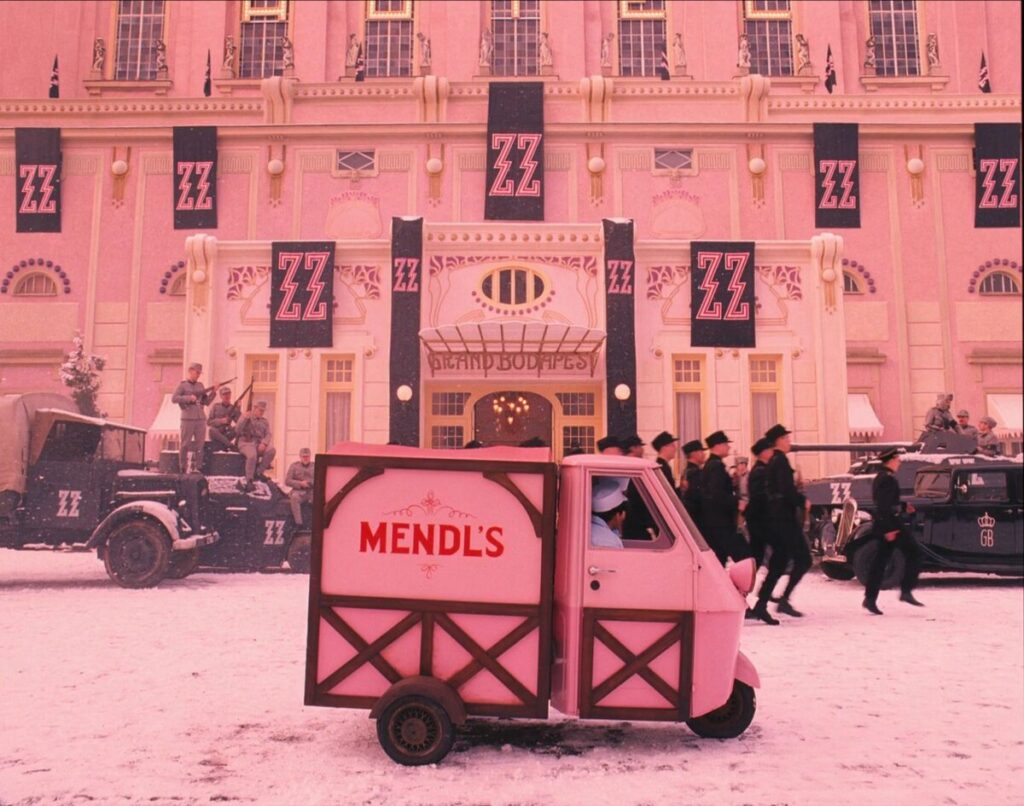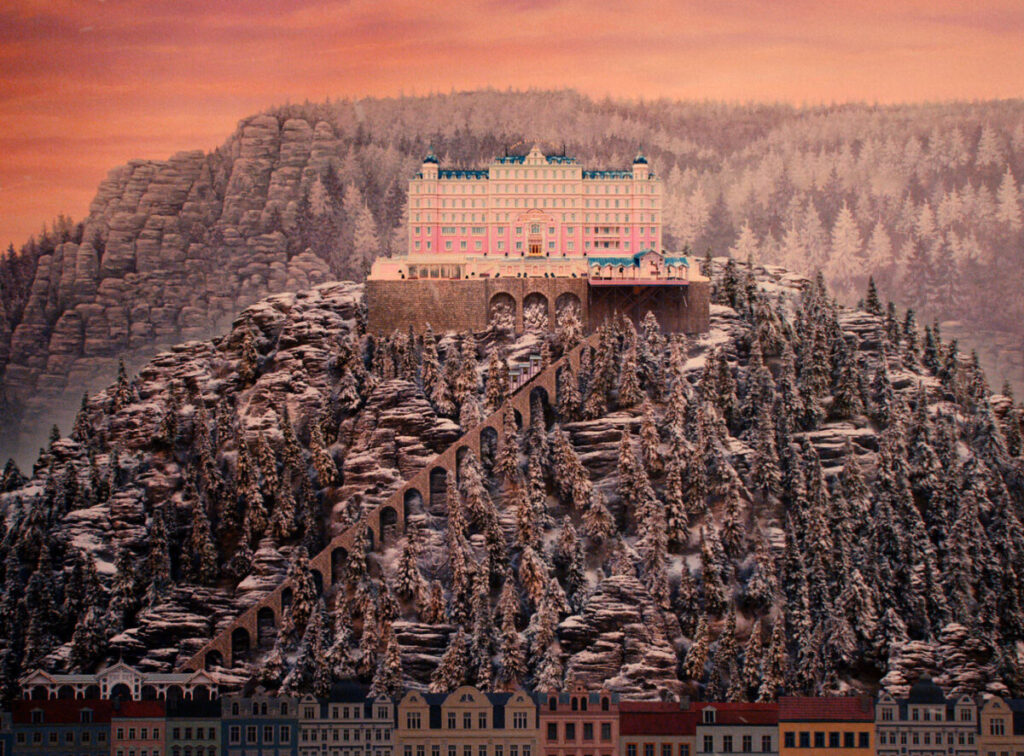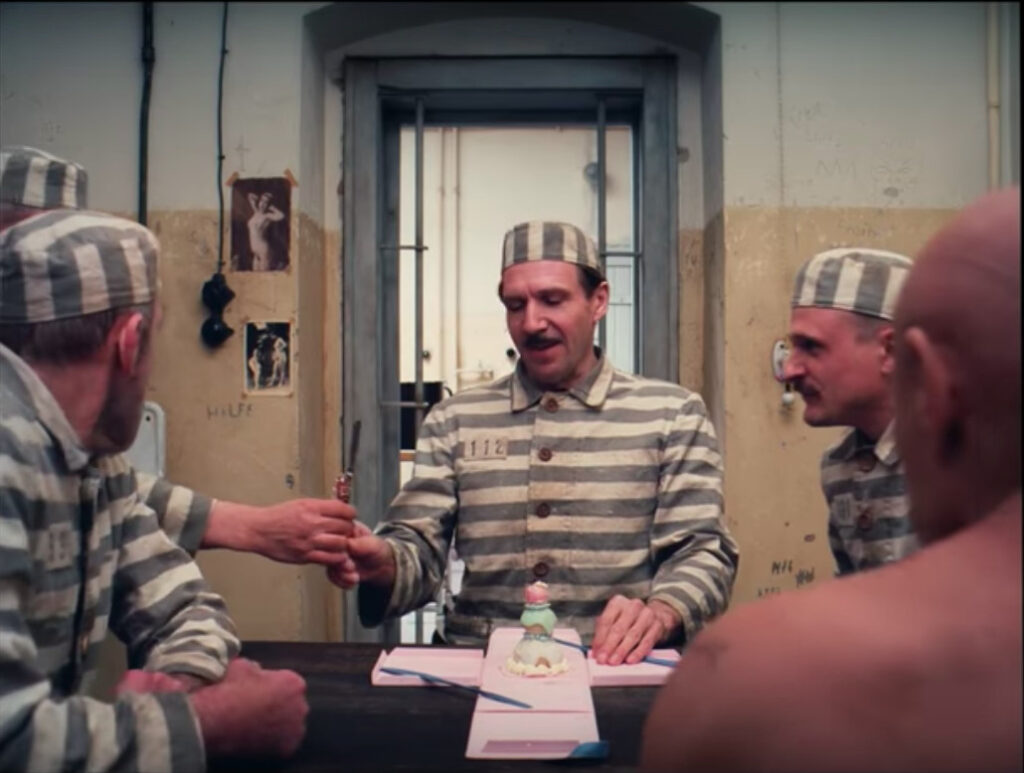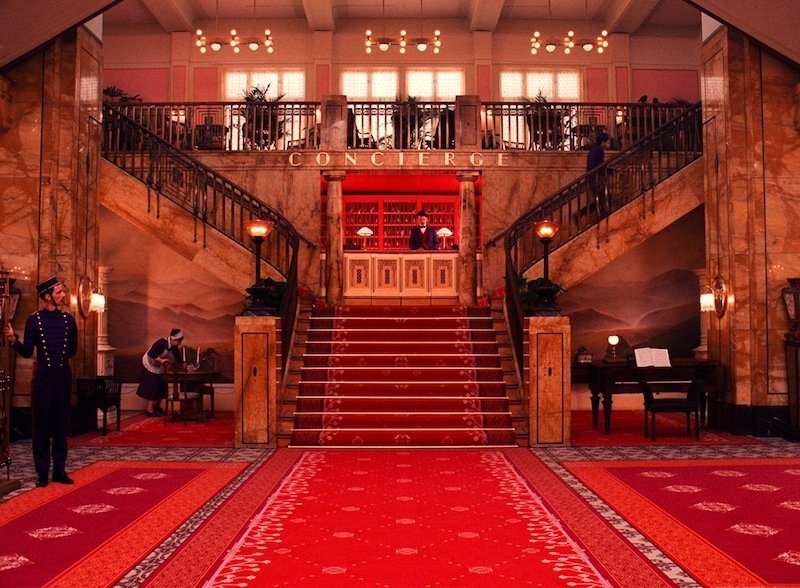Wes Anderson’s “The Grand Budapest Hotel” is a visual delight that intricately weaves together storytelling and meticulous attention to detail in its mise-en-scène. While watching it, I was impressed by the rich visuals where every frame feels meticulously arranged like a work of art.
Use of Color
Overall, the film employs a vivid color palette, with each set design and costume carefully selected to create a visual distinction between different time periods. Notice the shift from the vibrant pink of the hotel in its prime to the darker, muted tones as the story progresses through different eras. The colors red and pink were prominently seen in the hotel itself, symbolize both opulence and the hotel’s former glory.

Set Design and Composition
The use of a miniature model to depict the hotel exteriors and surrounding landscapes is a signature Anderson touch. It gives a whimsical, storybook-like feel to the setting. Additionally, Anderson’s meticulous framing and symmetrical compositions are prevalent throughout the film. Scenes like the concierge desk and the prison break exhibit precise symmetry, emphasizing the controlled chaos within the narrative.

Costume Design and Characterization
Characters’ clothing choices distinctly reflect their roles and personalities. Notice M. Gustave’s (Ralph Fiennes) elegant and polished attire compared to Zero’s (Tony Revolori) more modest and practical clothing. The uniforms of the hotel staff further emphasize the order and uniformity of the hotel’s world, highlighting the precision of the establishment.

Specific Scenes
- The Prison Escape: The sequence where M. Gustave and his team orchestrate a daring escape from prison is a prime example of Anderson’s meticulous mise-en-scène. The drab prison setting contrasts sharply with their colorful clothing, accentuating their rebellion against the stark environment.

- Hotel Lobby and Corridors: The film frequently revisits the hotel’s lobby and corridors, showcasing its grandeur and attention to detail. Every element, from the furnishings to the wallpaper, contributes to the overall aesthetic.

Wes Anderson’s “The Grand Budapest Hotel” stands as a testament to the power of meticulous mise-en-scène. Every visual element, color choice, set design, and costume contributes to the film’s storytelling, creating a visually immersive and compelling cinematic experience.